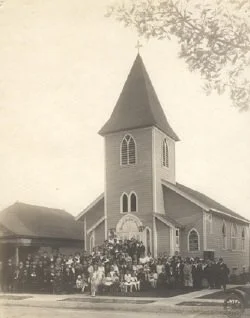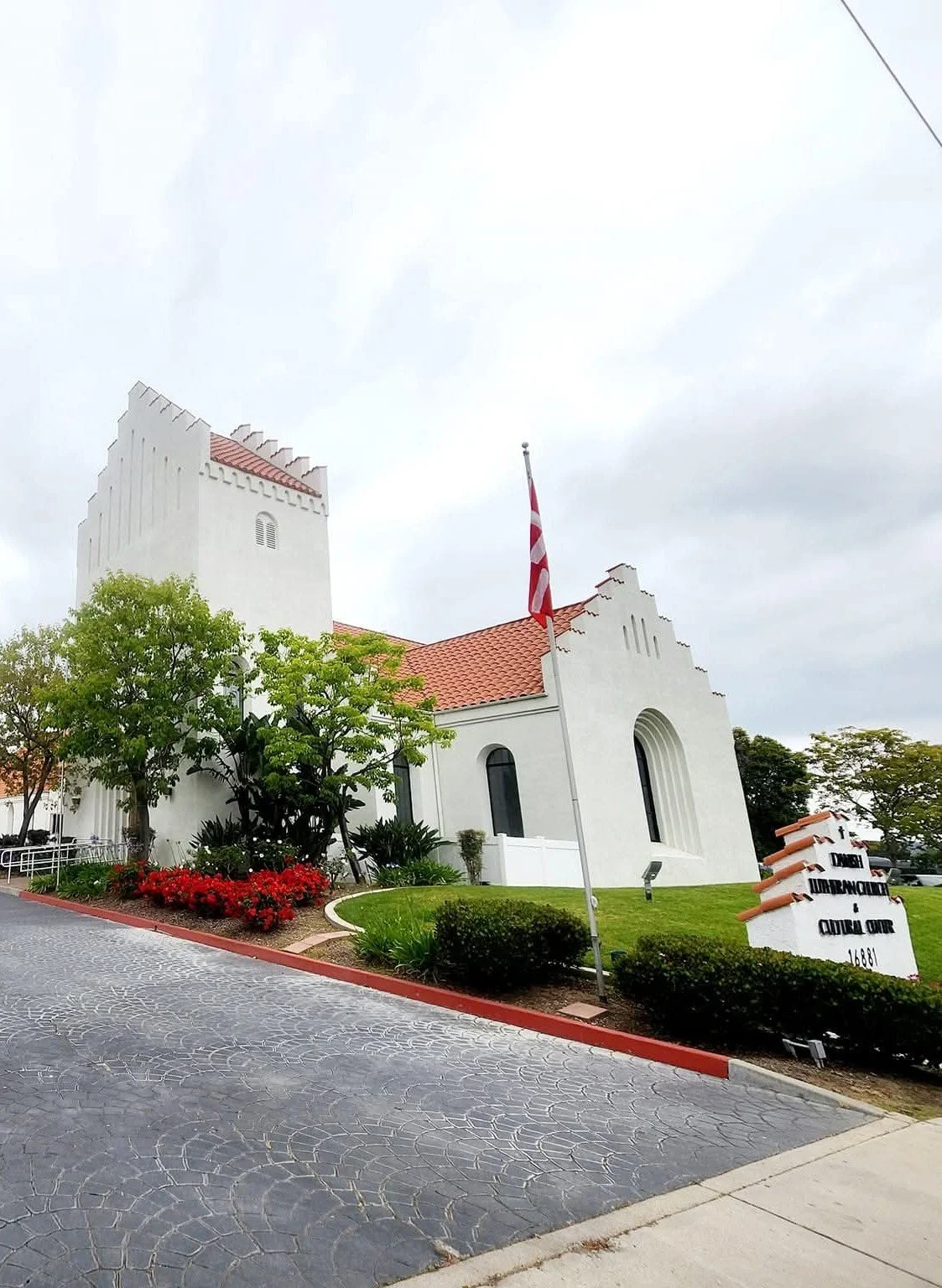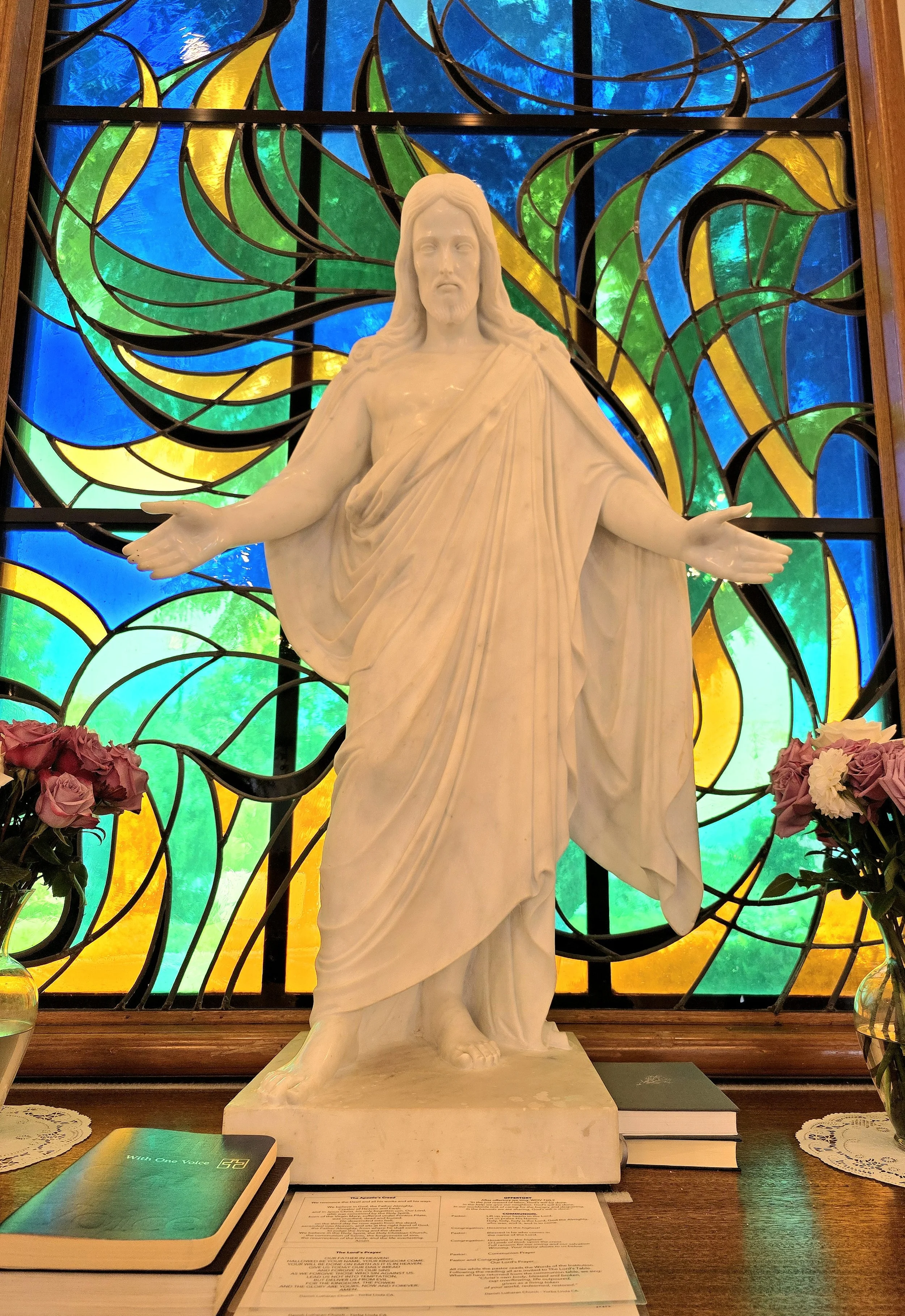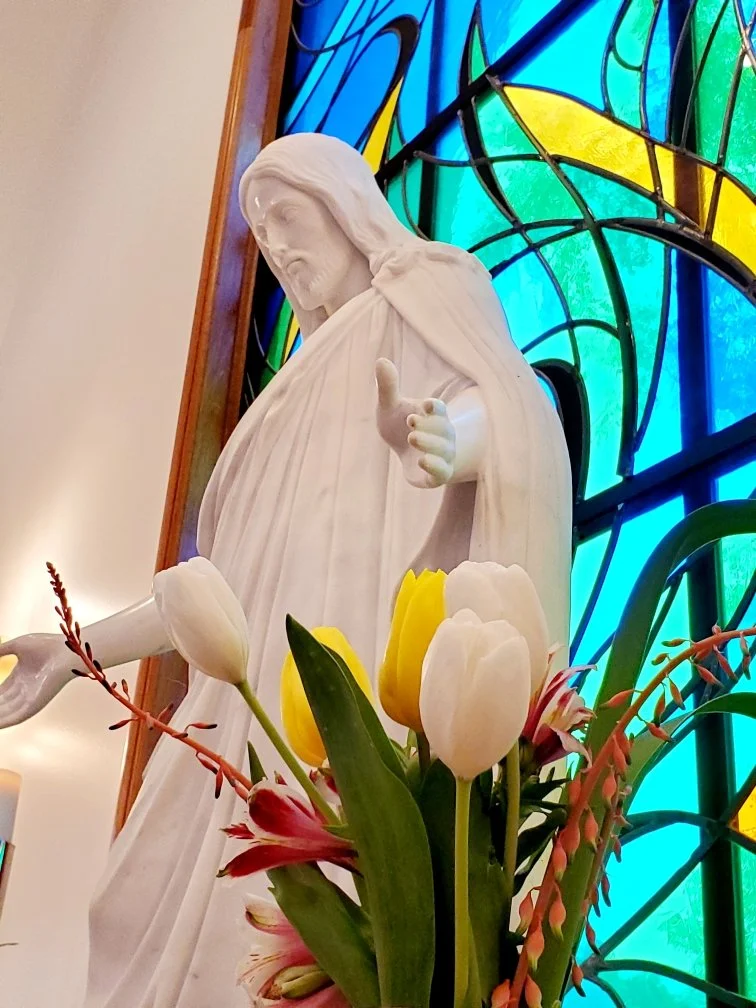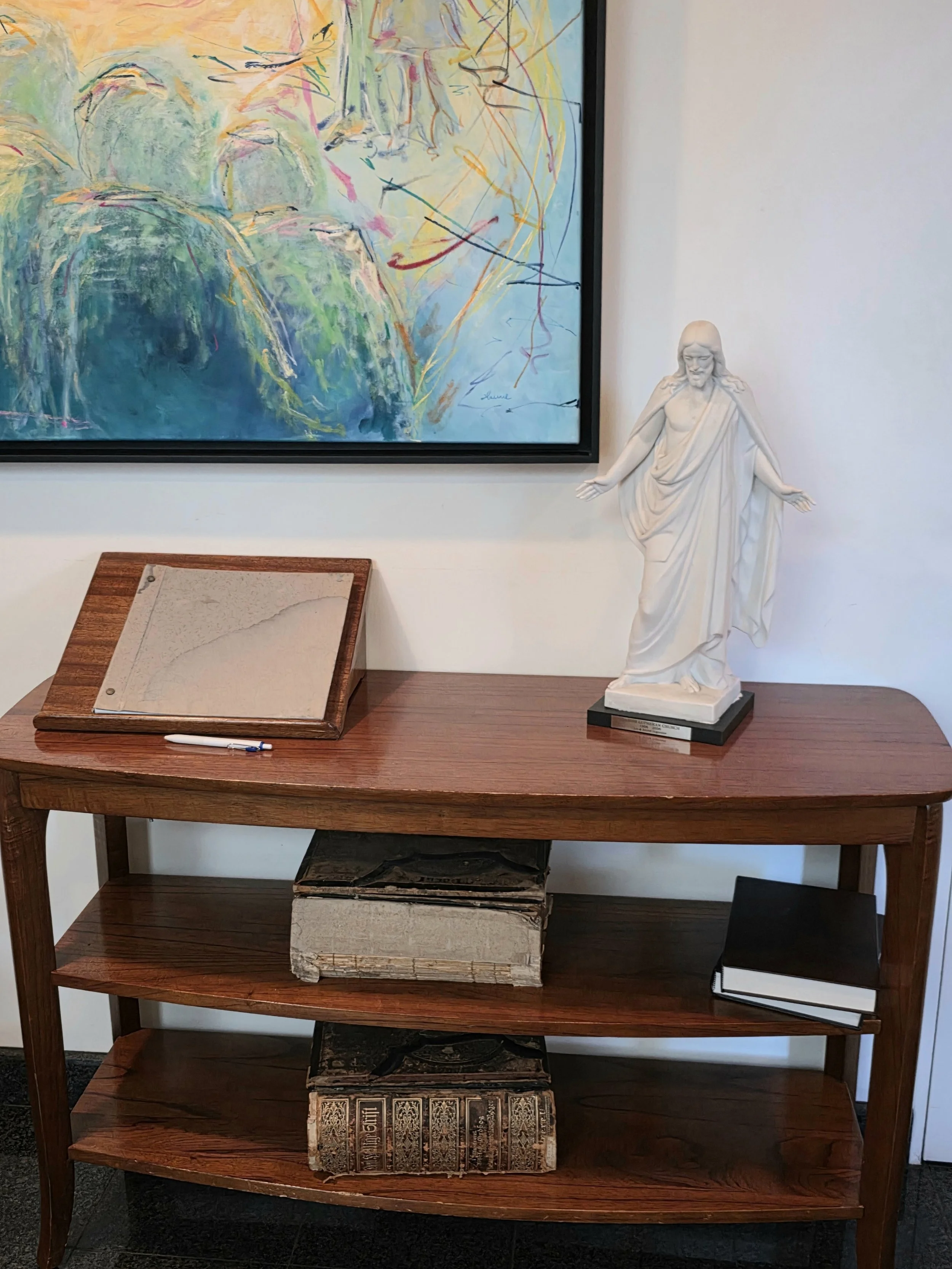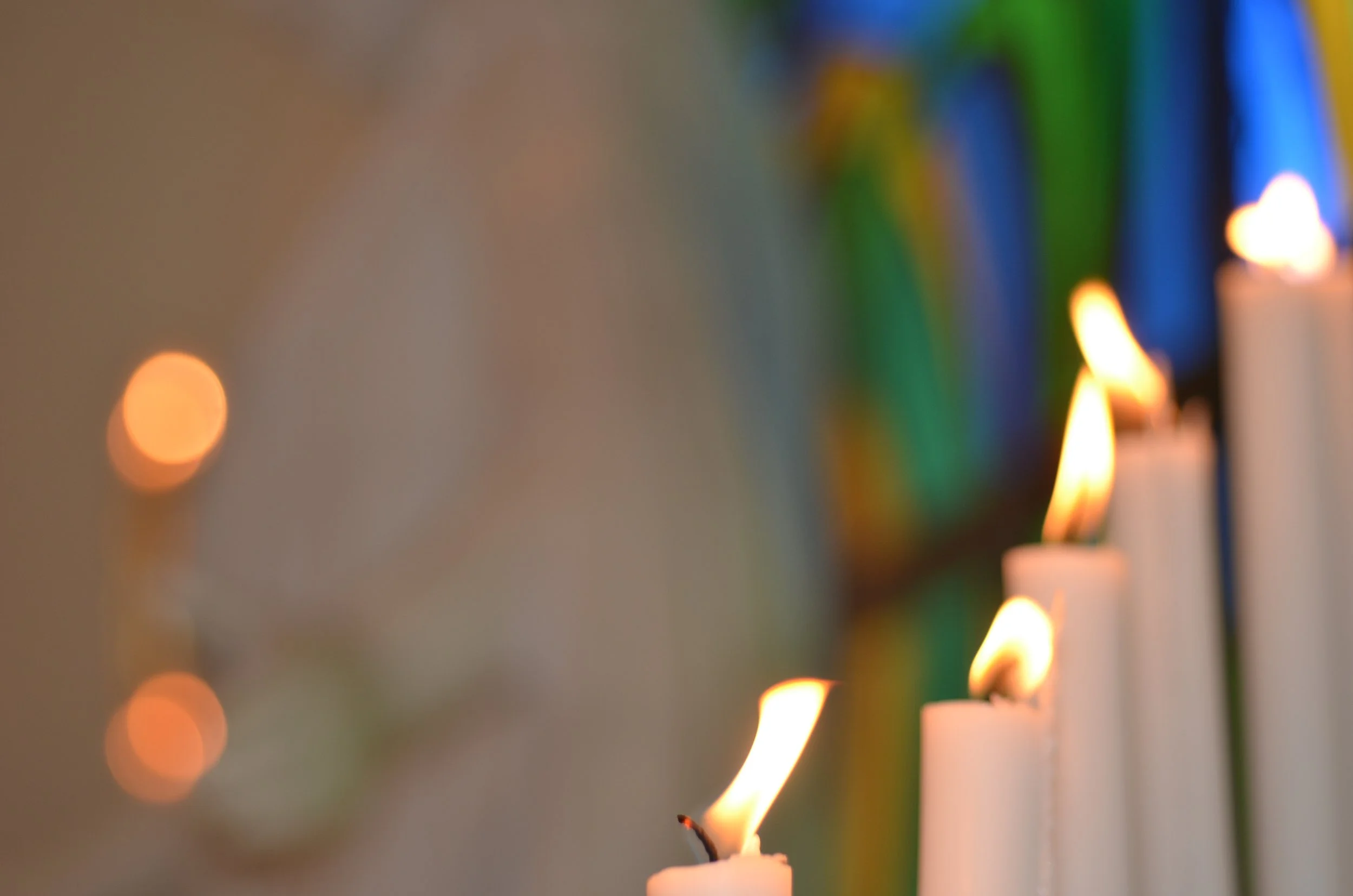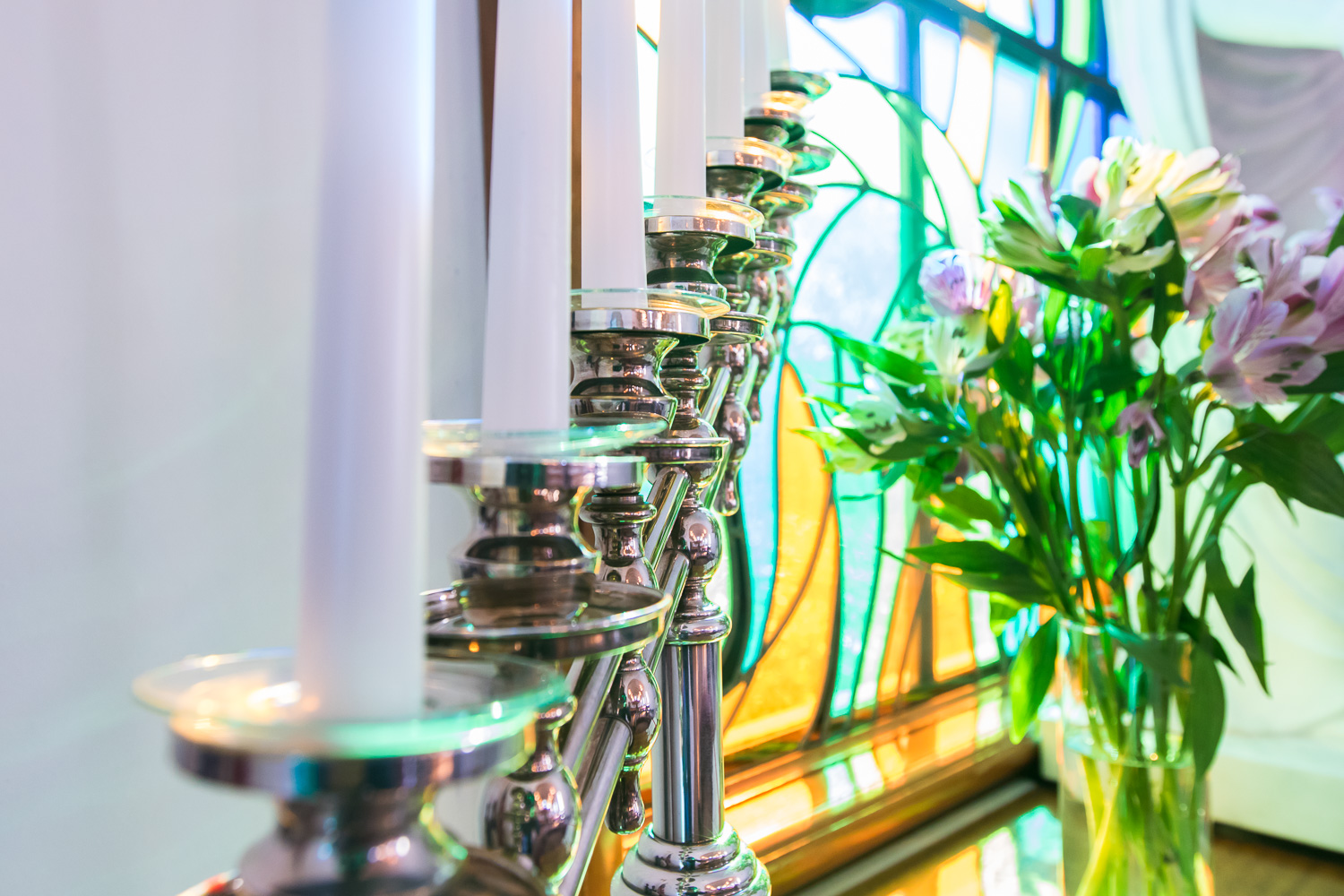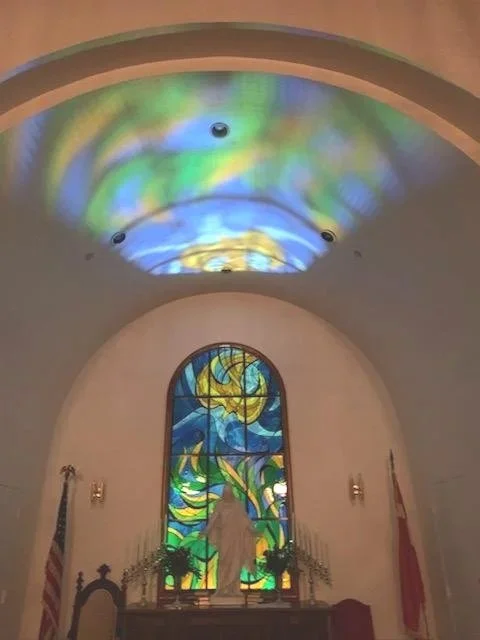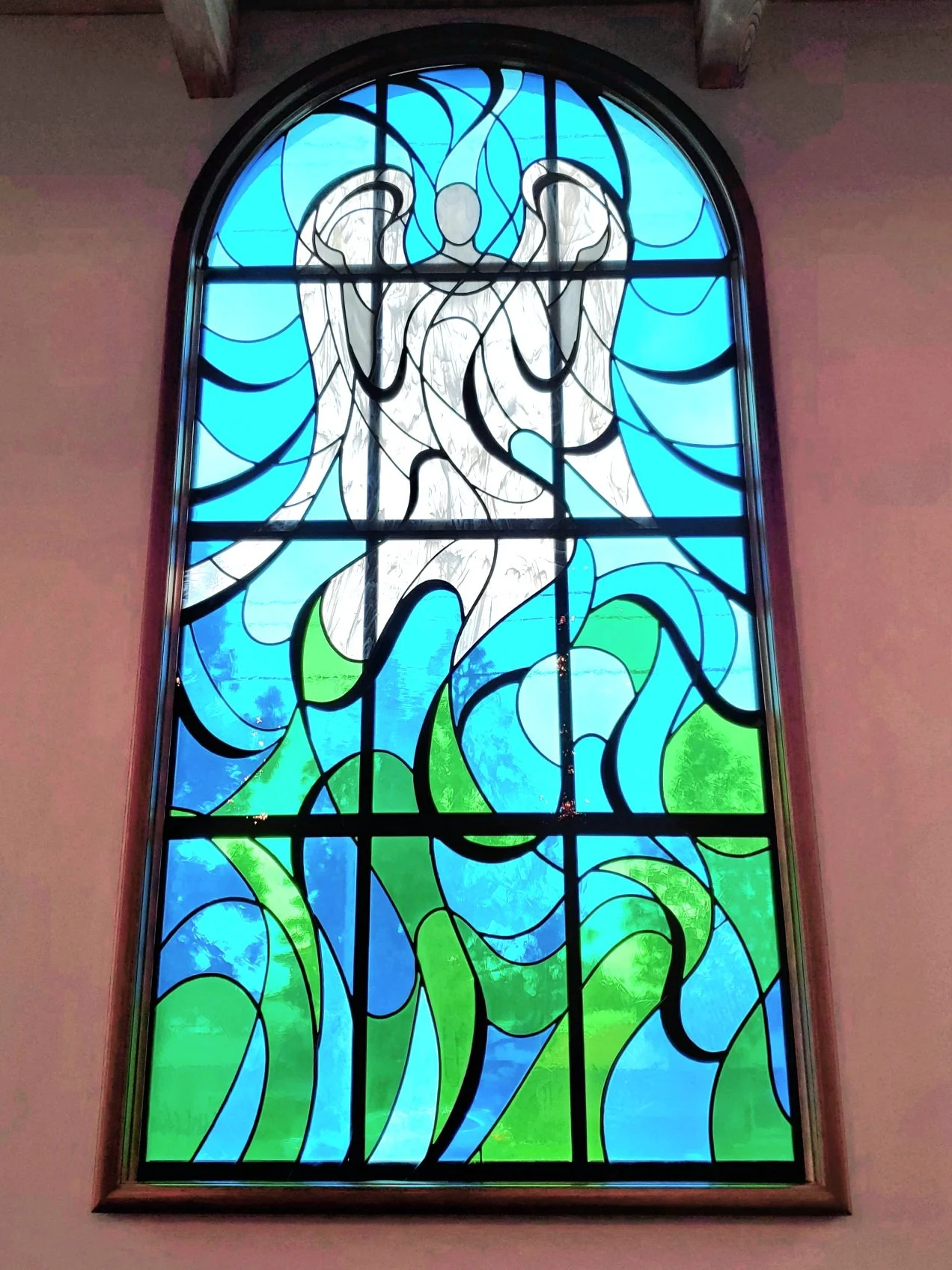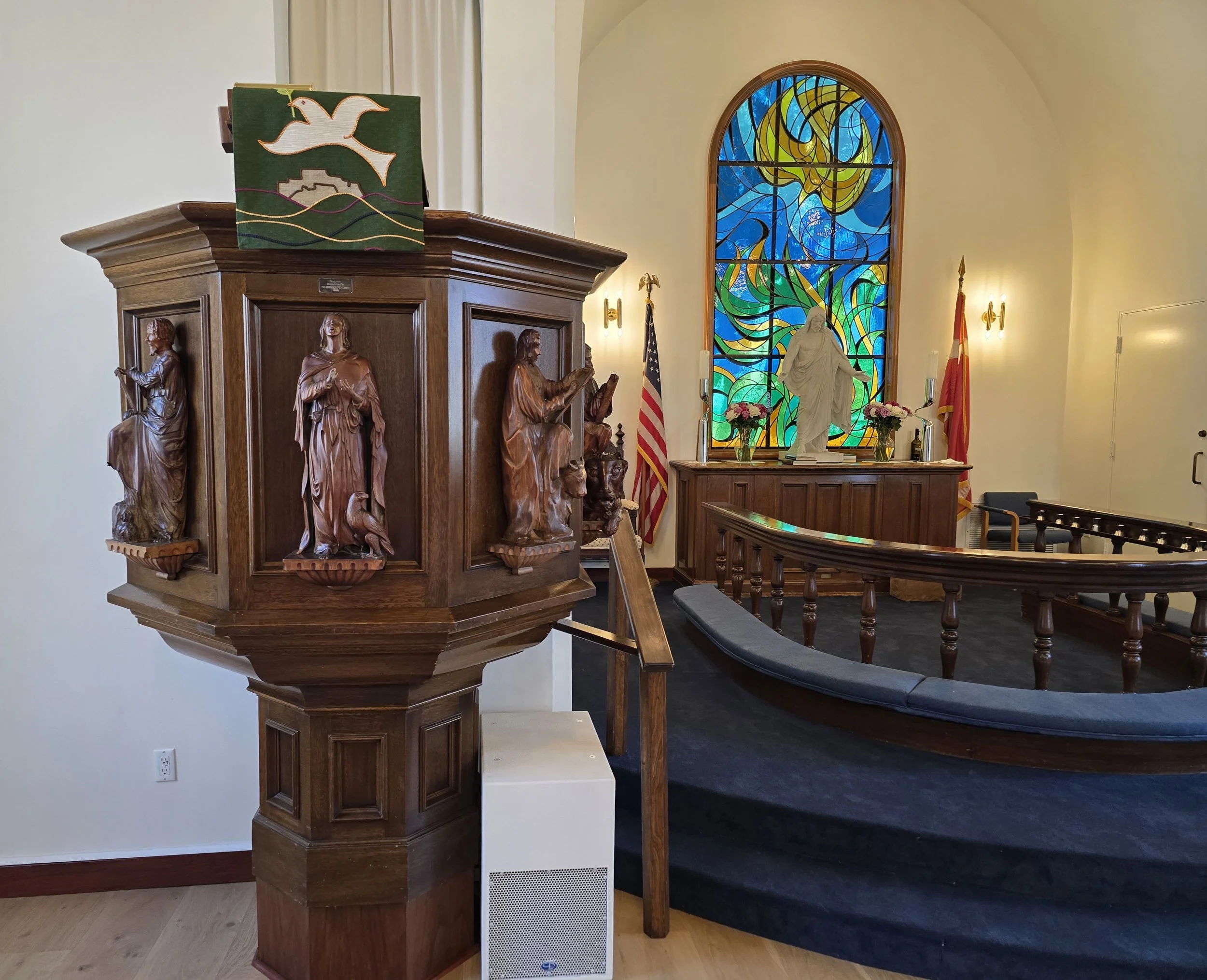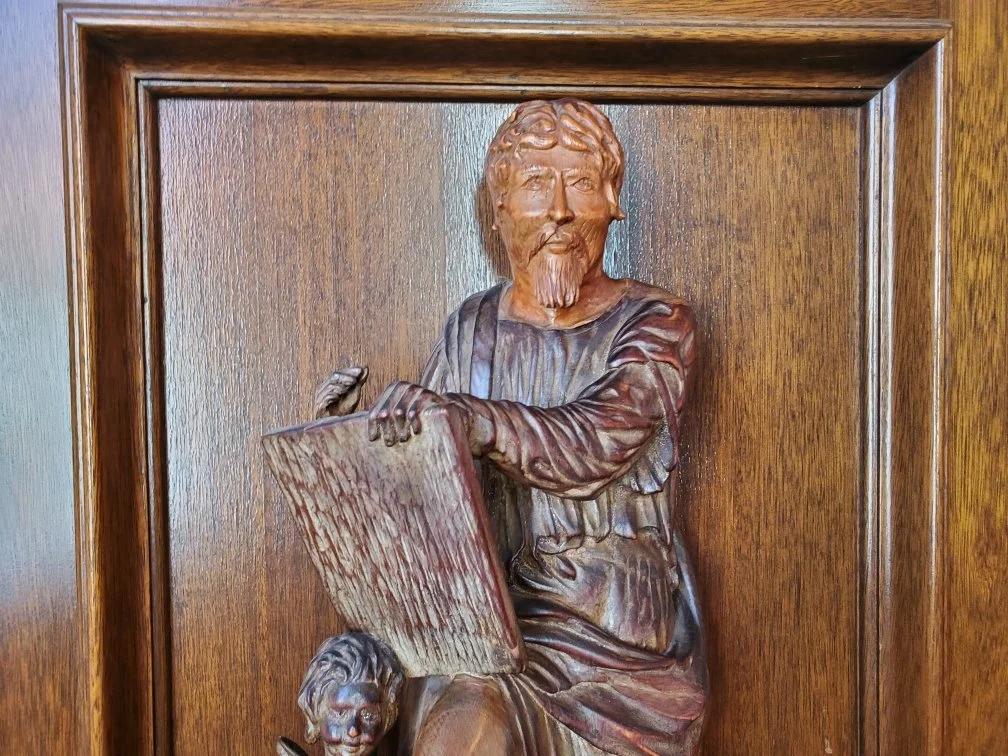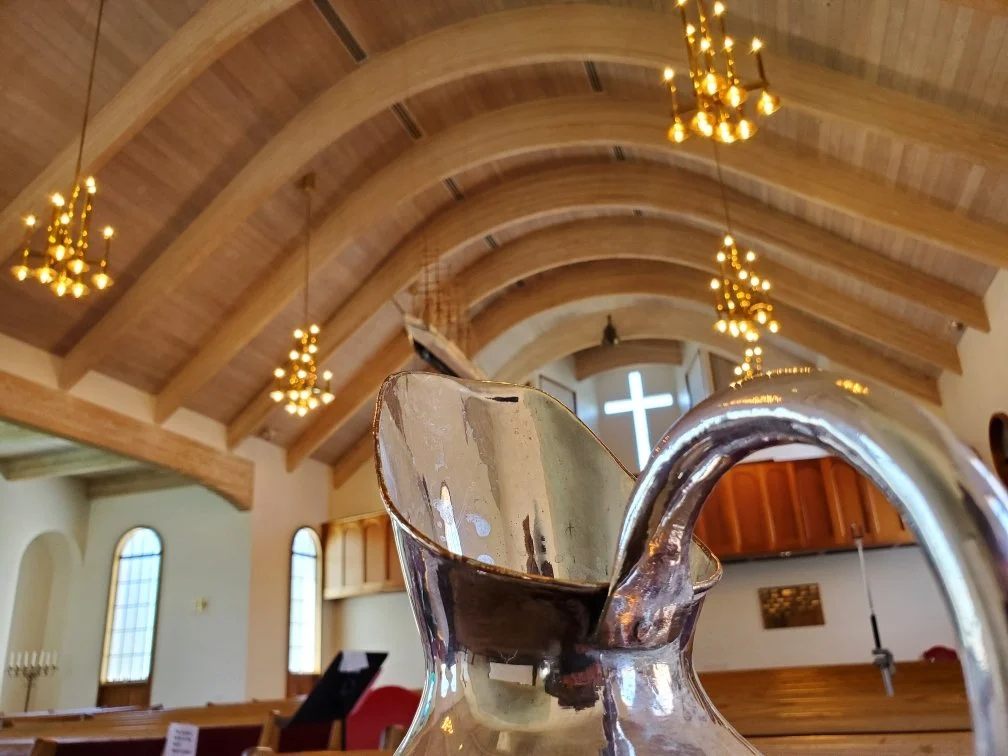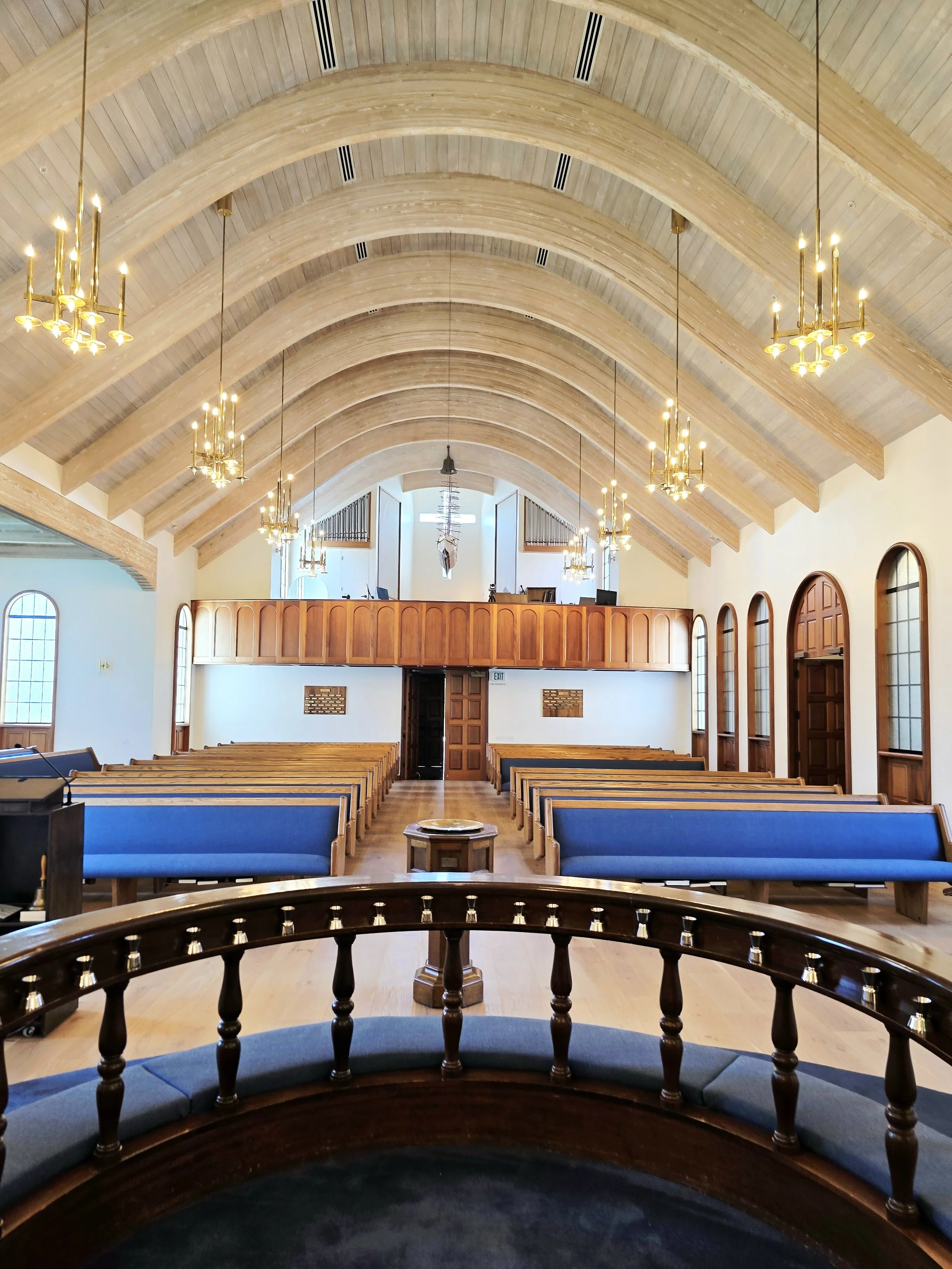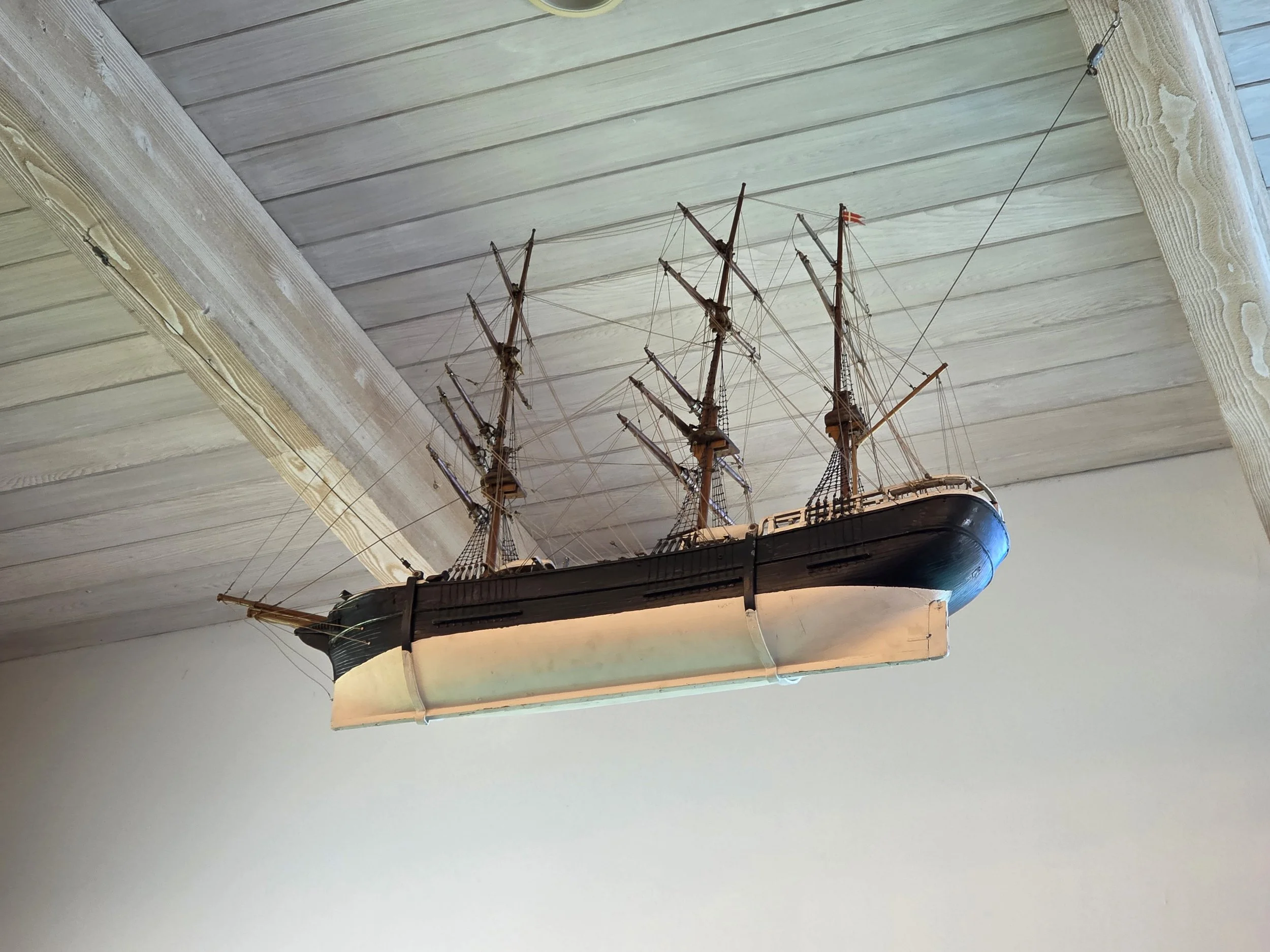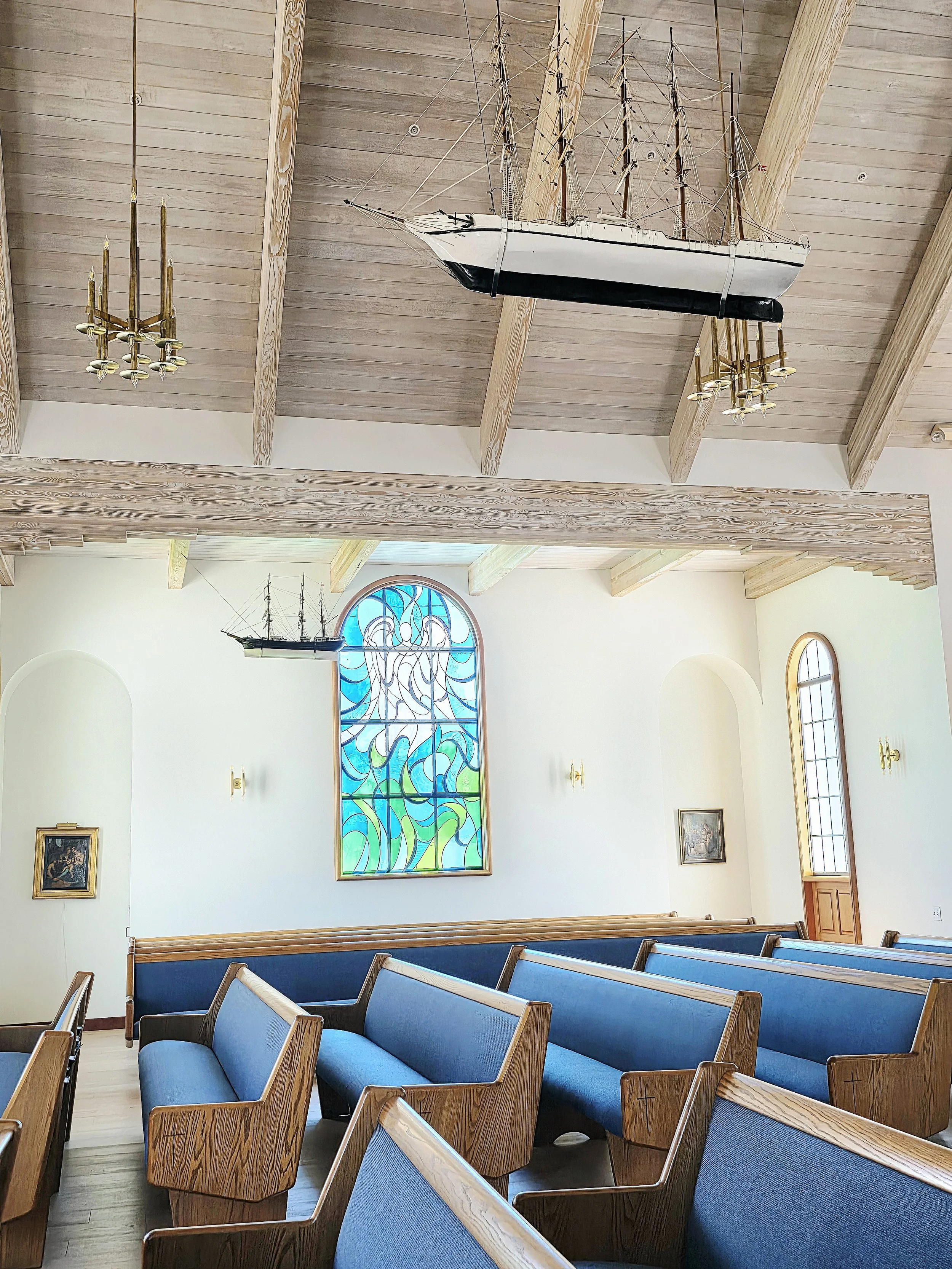The Church - Kirken
History - Our Sanctuary - Artifacts
History
The Beginning
In 1905, the Jacob Paaske Johnson family, migrants from the Midwest, was looking for a Danish church in the Los Angeles area, but found none. Determined to worship in Danish they summoned a few other Danes to form a small congregation. Jacob P. Johnson, his wife, Inger K., their daughter, Pauline, Nils C. Larsen and Johanne Poulsen formed a Danish Lutheran Church that they named Den Første Danske Evangelisk Luthersk Kirke i Los Angeles later to become Den Emanuel Danske Evangelisk Luthersk Kirke i Los Angeles. It began as a dream for these five Danes and became a reality on June 5, 1906.
1906 - 1937, The first church (46th street, Los Angeles)
During 1906-1916, Sunday services and worshipping occurred at various churches, and fellowship halls in downtown Los Angeles. In 1916 the first permanent Danish church location was on 46th street and used until 1937. The building has since been torn down.
1937 - 1993, the second church (4260 3rd ave, L.A.)
From 1937 to 1993 the congregation worshipped in the beautiful church on 3rd Ave and 42nd Street (4260 3rd Ave, Los Angeles). Edith M. Northman’s design incorporated a dominant saw-toothed gabled facade and rear elevation of the main building section, a recessed main doorway of concentric arches, a stepped gable side entrance to the Church, and a whitewashed exterior. The tower stood 35 feet (10.6 meters)
To better serve the dispersed congregation, they voted on “Intent to Relocate”, at the annual meeting in 1989. An overwhelming 85% voted for relocation. The Yorba Linda property’s purchase agreement was signed April 16, 1991 and closed escrow March 20, 1992. The last service at the second Danish church was held February 21, 1993.
1993-1994 “Homeless”
The congregation was "homeless". Services and events were mostly conducted at Andy's “Danmarkshaven” (Denmark Garden) in Artesia and the Danish Soldiers Hall "Alamo" in Highland Park. From the last service at the second Danish church until the grand opening of the current church, Karl Olsen, Council President, and his wife Ruth always secured a site for the 107 “homeless” Sunday church services. They ensured that the church service equipment and refreshments were delivered from place to place.
Danish architect Ebbe Videriksen began construction drawings for the third Danish church, located in Yorba Linda, in February 1993 and finished August 1993. Official ground-breaking took place on Sunday November 21, 1993. The groundbreaking (spadestik) was performed jointly by Consul General Leif Reimann, Council President, Karl Olsen, and Relocation Chairman, Carlo Christensen. The ground-breaking was attended by over 200 members and friends.
From the old Danish tradition that after the highest roof timber has been put in place a flag and wreath of fresh greenery were placed on that point, the congregation on May 15, 1994, celebrated the raising of the roof (Rejsegilde). The tower was not finished, but its framework stood 55ft (16.9 meters) high and the beams in the church were 26ft (8 meters) high. Over 225 members and guests were present.
1995 - “now”, the third church (16881 Bastanchury rd)
After an impressive, dedicated effort, the Danish Lutheran Church was successfully relocated to Yorba Linda, Orange County.
On March 15, 1995, the Certificate of Occupancy was received from the Orange County Fire Department. The inauguration and grand opening was held March 19, 1995.
It proved to be a very wise decision indeed to settle in Orange County as the congregation increased and now has over 750 members.
The first Danish Church
1916-1936
The second Danish Church
1937-1993
The current Danish Church
1995 - now
The Church Sanctuary
Our sanctuary is an airy and light-filled room during the day and in the evening the two stained glass windows are beautifully reflected over the Christ statue and towards the front of the altar area and over the side pews respectively. The sanctuary décor is a harmonious combination of traditional and contemporary Christian religious art and Danish church traditions.
The Danish Church has been given two very unique, handmade altar cloths. A hand made altar cloth was made in commemoration of Her Majesty Queen Louise’s marriage to His Majesty Christian IX on May 26, 1842 and donated by their great grandson Christian Castenskiold and his wife Cecily.
The second altar cloth was donated by Mary Lou Chaney whose mother made the piece in Paris in the 1930s with the Danish congregation there in mind but never materialized. After many decades the altar cloth has found its home in a Danish congregation outside Denmark.
Artifacts
The Altar and Altar Frontals
On December 1, 1940, the altar was dedicated and blessed. Mrs. Henry “snedker” Petersen donated the altar in memory of her husband.
In 1962 the church was given two altar frontals (green and purple) by the Altar Guild and Sunday school members. Information is not available for the red or white frontals.
The blue altar frontal was designed and made by Vibeke Alnor Fong. Blue is the liturgical color for the advent season, and the embroidered stars were chosen as a symbol for the birth of Christ. The blue frontal was first used at the annual Cheer Committee Gala in December 2004.
Christ Statues on the altar and in the narthex
The church has always had a copy of the famous Bertel Thorvaldsen Christ statue on its altar. Two Christ statues in our church are replicas of the world famous, larger than life sized Bertel Thorvaldsen statue in “Vor Frue Kirke” in Copenhagen.
The altar version is 4 feet tall (120 cm), and made from the same Italian Carerra marble quarry that was used for the original statue in the Cathedral of Copenhagen. The statue was donated by Mrs. Mia Christensen and her son, Mr. Carl Christensen Jr. in 1995.
The smaller Christ statue is a handmade, matte glazed porcelain reproduction by the Spanish Lladro company. It rests in the entry to the church welcoming worshippers and guests as they enter.
Altar Candelabras
The two silver candelabras were designed and made by Danish silversmith Philip Paval and donated by Svend Olsen in 1937.
Stained Glass Windows
The sanctuary features two distinct stained glass windows with modern, fluid lines and semi-abstract form designed by artist Mitsuki Kondo and installed in 1996. The windows were a gift from Gudrun and Jens Edvardsen.
The window above the altar depicts the Holy Spirit in the form of a dove descending into tongues of yellow and orange hued flames on a green field.
The window in the side ship shows the angel Gabriel surrounded by clouds and blue skies.
Pulpit
The wood pulpit was made in the United States in the 1930s destined for a church in Denmark but was never shipped. It was purchased for the second Danish Church on 4260 3rd Ave, Los Angeles (3rd Ave. and 42nd street) for $800, prior to its inauguration in 1937. The wood statues were carved by Fred Clark in 1938-39.
Chalice
The old chalice was donated by Mrs. Grace Sørensen in 1984 in memory of her husband Carl Sørensen.
A stainless steel chalice was purchased in 2004 in Denmark to replace a worn out silver plated chalice. The new chalice was donated by Vivian Daily and Peggy and Vance Wolverton.
Both chalices are used during communion, at different times.
Baptismal font, Basin and pitcher
The moveable wooden baptismal font was made by Niels Peter Nielsen for Mr. and Mrs. S. Mogensen Mogensen who donated it to the church in December,1937, in memory of their daughter, Anna. Miss Edith Northmann, the architect of the second Danish church at 3rd and 42nd (4260 3rd Ave, Los Angeles), designed the font.
The accompanying silver baptismal basin is a gift to the church from the Danish silversmith Philip Paval.
The church’s Friendship Circle donated the current silver plated baptismal pitcher in 1967.
Communion Rail and Hymnal Boards
The communion rail was blessed and fourteen members received communion for the first time on March 13, 1938. (Donated by Mr. Arthur Funder)
The communion rail and hymnal boards were made by Niels Peter Nielsen for the second Danish church at its 3rd Ave. and 42nd street location (4260 3rd Ave, Los Angeles).
The Bell
A 200 pound brass bell (inscribed “Danish Lutheran Church, dedicated March 19, 1995”), hangs above the choir loft and tolls at the beginning of each service. The bell is a replica of the ship bell on the Danish battleship “Fregatten Jylland”. It was cast at Slagelse Metal and Stålstøberi in 2001 as were the plaques listing pastors and council presidents who served up to that time. The bell’s installation (Indvielse af Kirkeklokke) took place December 1, 2001. (Donated by Karl and Ruth Olsen)
The Church Ships
In our sanctuary we have two ship replicas.
According to Danish tradition, a sailor would carve a replica of his ship or boat as a way to give thanks for his safe return following a difficult voyage.
The first is a scale model (56 inches/140 cm) of the Danish battleship Fregatten Jylland suspended above the nave in the sanctuary. It was a gift from Mr. & Mrs. Kenneth Hansen, who commissioned it in Denmark in 1966. It was installed in the church at 3rd and 43rd in October 1966 and again in Yorba Linda in March, 1995, following restoration by Mr. Wilmar Lindgreen.
The second ship is hanging in the side ship of the sancturary. This ship was discovered in a Hollywood pawn shop in 1962 by Winstrup Oleson who purchased it with support from his wife Helen and fellow Danes Svend Wickman, Anna Agergaard, Kai Drengler, Ruth Veigel and Ruth Fischer. The pawnbroker told the group that the ship had come from the Danish Church in Charlotte Amalie in St. Thomas. With the sale of the Virgin Islands to the United States in 1918 the church closed and the Danish pastor took along the ship with the Danish flag “Dannebrog” flying from its mast. It is our hope that, some day, we will be able to fill in the gap of the story.
The Pastor’s robe and chasubles
Our Pastor proudly wears the traditional Danish pastor’s gown and a piped, starched ruff for the entire service. The pastor typically adds a chasuble for Communion. The Danish tradition with the black gown and the white ruff dates to the 17th century and was originally the formal wear of academically trained men.
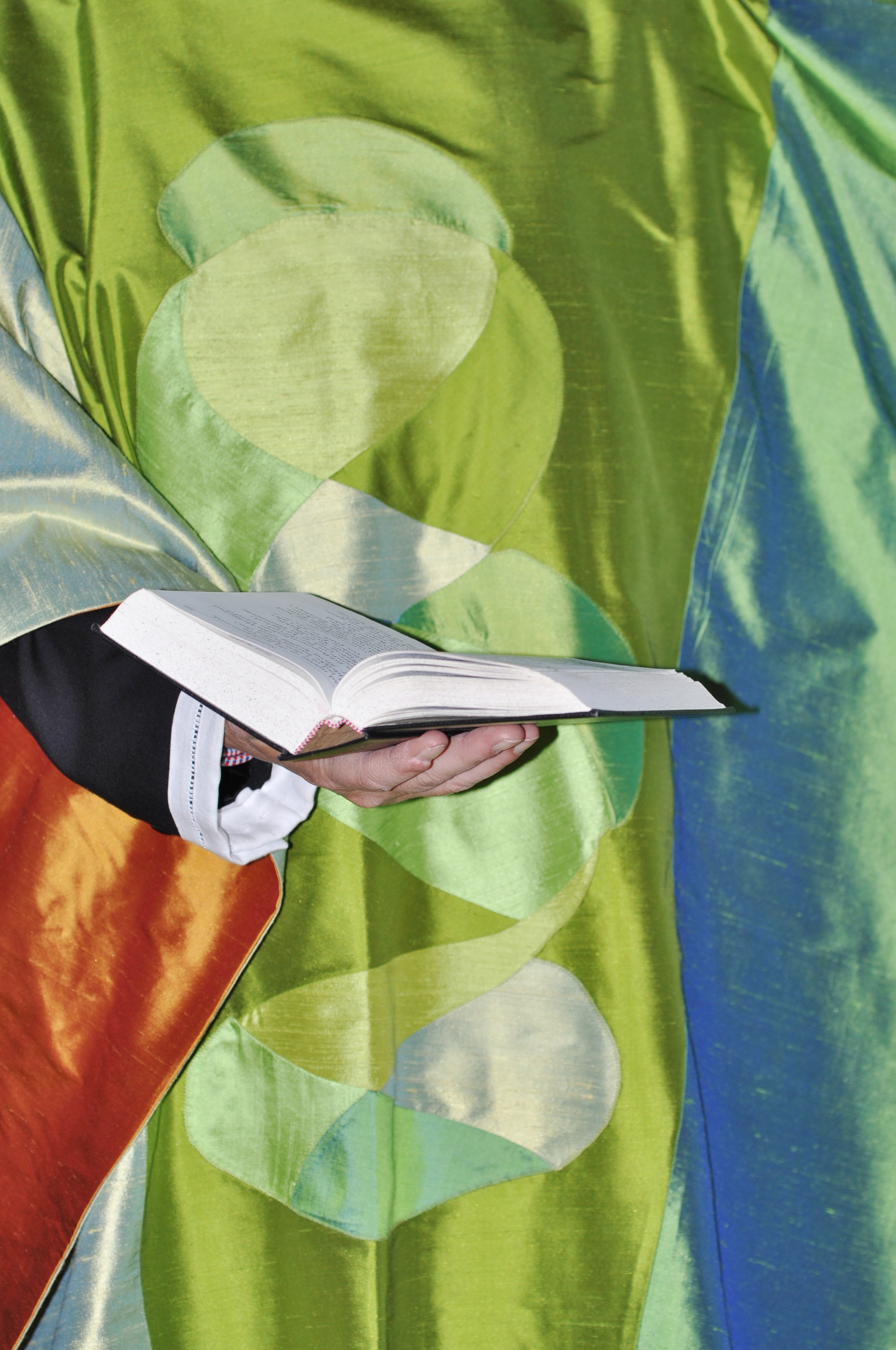

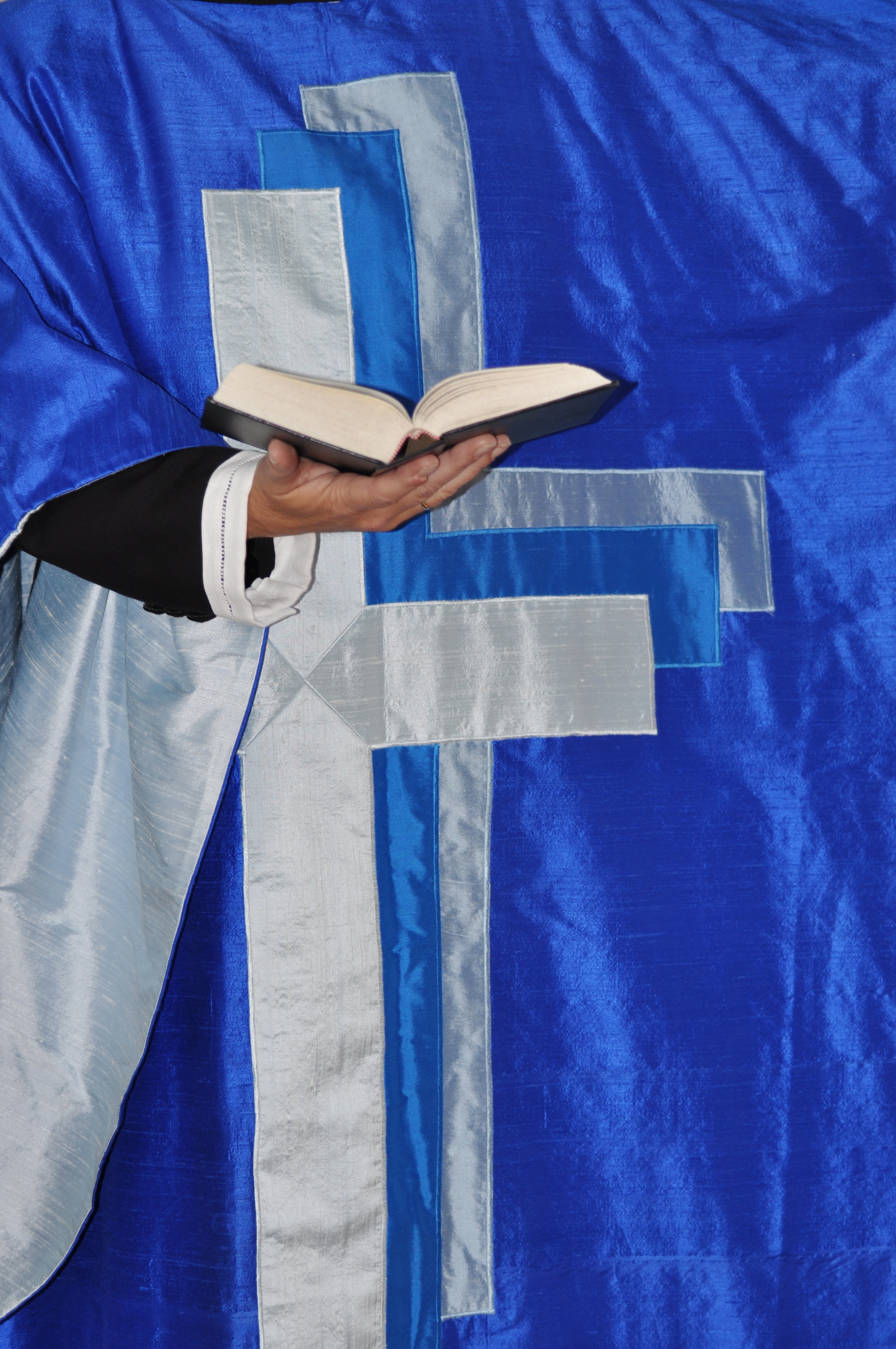
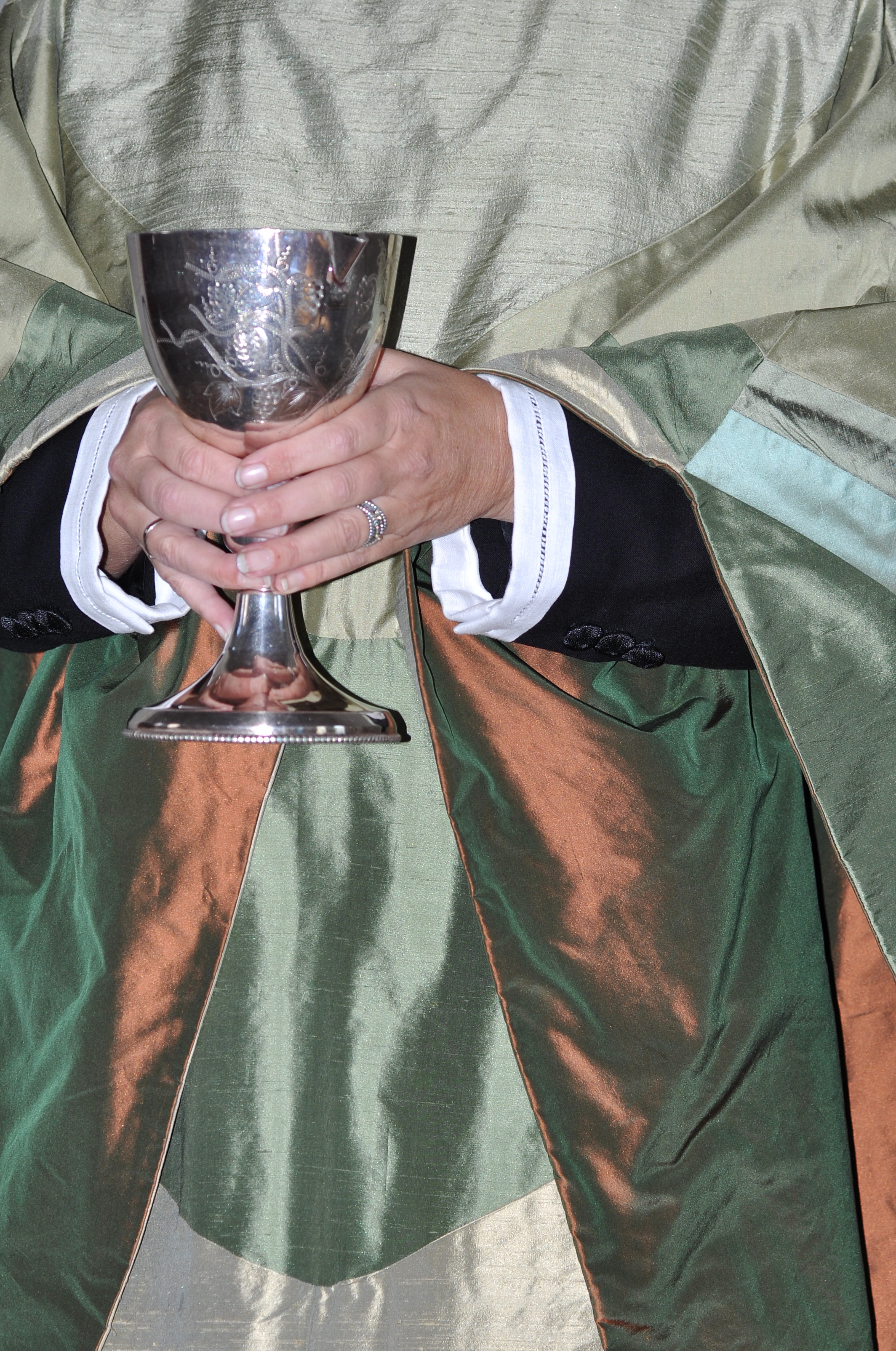
To enhance our services and emphasize each liturgical season our pastor wears chasubles following the sermon until the end of the service.
The chasubles and an alb were designed and made by Vibeke Alnor Fong in consultation and cooperation with Inge Greenwald, Lilian Lykke and Miriam Stender. The purple chasuble was worn for the first time on December 5, 1998, and the red chasuble on Christmas Eve that same year. The white chasuble was inaugurated on March 7, 1999, in connection with the celebration of the opening of the newly finished, covered patio. The green chasuble was initially worn on the first Sunday of Trinity in 1999.
The five chasubles correspond with the colors used in the liturgical seasons (white, green, purple, blue and red).
Each chasuble incorporates a variation of the cross. Except for the purple/violet chasuble all colors used in the chasubles closely mirror those present in our sanctuary’s stained glass windows or other interior.
The common element for the chasubles is the cross. This is the Christian symbol of salvation and redemption. Just as the colors vary with each vestment so the shape and size of the cross differs with the liturgical year. The purple and green chasubles both feature wide Latin crosses but the cross on the white chasuble is quite narrow. The cross on the red chasuble has equally wide horizontal and vertical arms. The cross appears on all four chasubles both on the front and the back.
